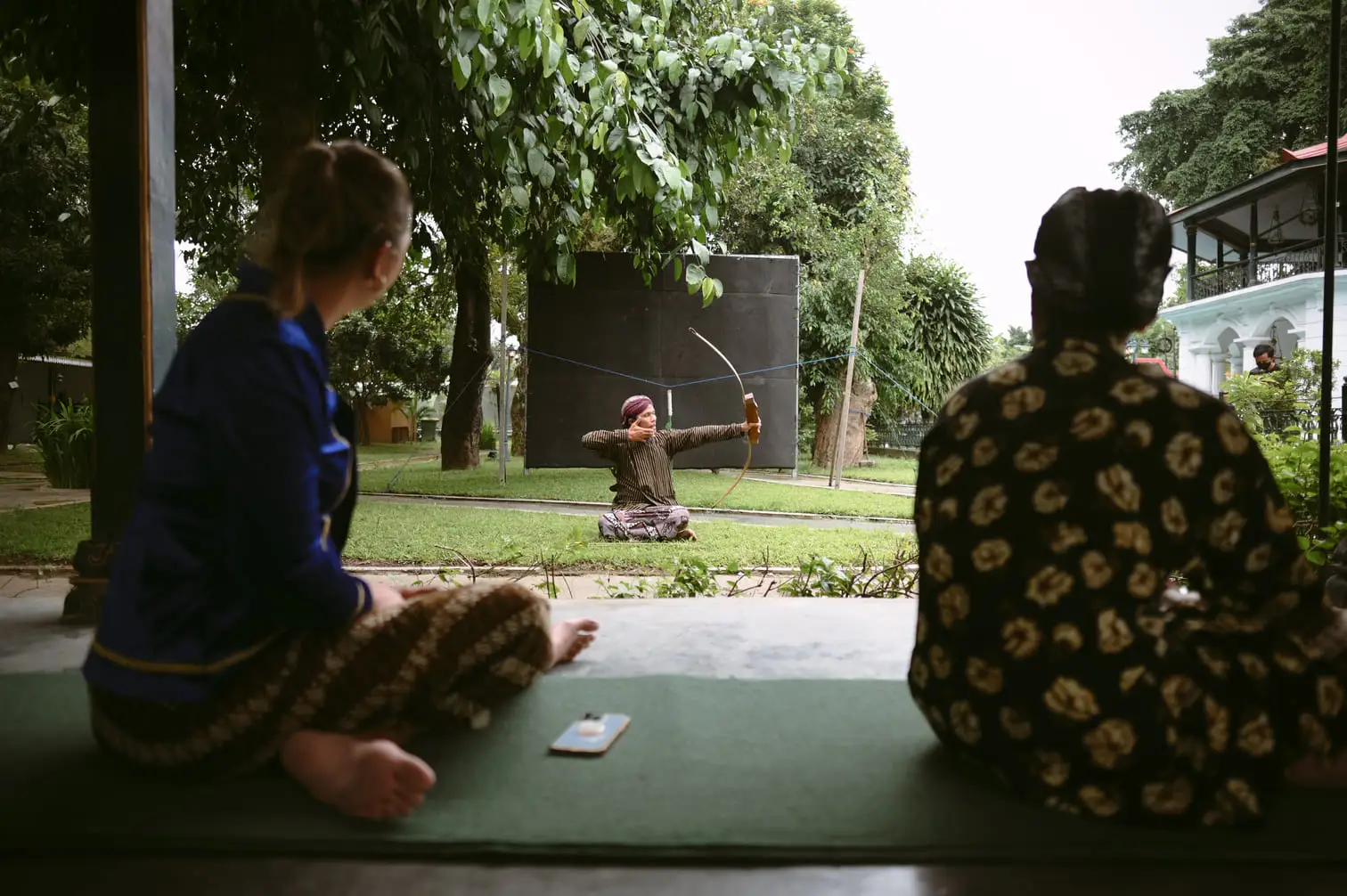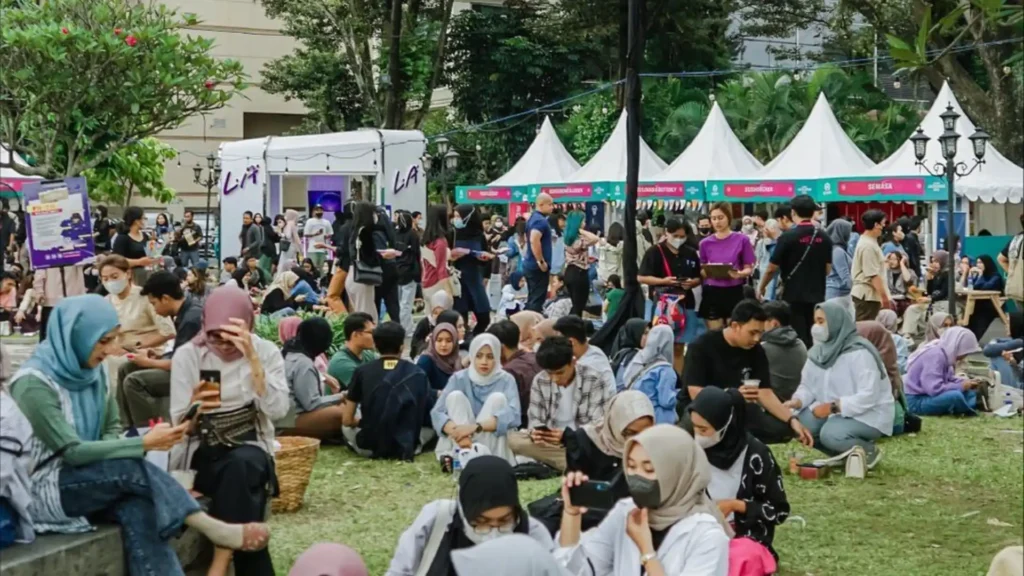Yogyakarta is undeniably rich in history, preserving noble values that have endured through the ages. Once the center of the Mataram Kuno Kingdom (Ancient Mataram), the region is steeped in diverse customs and cultural traditions. Among these is Jemparingan, a traditional Javanese archery art deeply rooted in philosophy and meaning.
Jemparingan is both a sport and a cultural art form unique to Yogyakarta. While it shares similarities with modern archery in technique, it differs significantly in its equipment and ceremonial procedures, reflecting the region’s distinct heritage.
What’s Jemparingan?
The word Jemparingan comes from the Javanese Krama Inggil (the highest level of Javanese language) and means “arrow” or “archery.” According to various historical sources, Jemparingan first emerged during the reign of Sri Sultan Hamengku Buwono I (1755–1792) and was originally practiced exclusively by the royal family.
Over time, the term Jemparingan Gagrag Mataraman (Mataram Style) was introduced, establishing the only recognized style in this traditional form of archery. Eventually, Jemparingan evolved into a formal competition among royal soldiers, intended to cultivate noble, knightly character. This traditional sport was designed to instill four core values, which remain central to its practice today:
- Sawiji: Focus on mind and action
- Greget: Passion
- Sengguh: Confidence
- Ora Mingkuh: Responsibility/Commitment
In line with this, Jemparingan also carries a deeper philosophical meaning: “Pamenthanging Gandewa, Pamanthenging Cipta,” which translates to, “As the bow is drawn, the mind becomes more focused on the target.” This reflects that physical discipline and inner concentration go hand in hand. Looking more deeply, the meaning behind this philosophy extends beyond archery, it also reflects how we should approach life. Just as aiming at a target requires full concentration, pursuing our goals and ideals in daily life demands focus, intention, and commitment to turn them into reality.
How to Play Jemparingan

Before learning how to play Jemparingan, several pieces of equipment must be prepared. The bow (Gandewa) and arrows (Jemparing) used in this traditional sport are typically made from petung bamboo, valued for its strength and durability.
Each arrow consists of several parts: the Deder (shaft), Wulu (feathers at the base), and Nyenyep (the tip placed on the bowstring for shooting).
The target, known as Bandulan or Wong-wongan, is shaped like a vertical cylinder, measuring approximately 30 cm in length and 3-5 cm in diameter. The top of the target, called Molo or Sirah, is painted red and features a bell that rings when the arrow hits the mark.
Below the Molo is the Jangga, which functions as a hook, followed by the Awak (body), painted white. At the bottom, a small hanging ball acts as an indicator for point deductions when struck.
Here’s the step-by-step playing Jemparingan:
- Anyone participating in Jemparingan must wear traditional Javanese attire and sit cross-legged with their body slightly leaning to the left.
- The bow is held in the left hand, while the right hand is used to draw the arrow.
- Players are expected to concentrate fully as they aim at a pendulum-shaped target positioned 10 to 20 meters ahead.
- To earn points, the arrow must strike either the Molo (top) or Awak (body) of the target.
- A successful hit is marked by the ringing of a bell mounted above the Pendulum, signaling precision and accuracy.
Experience Jemparingan at Royal Ambarrukmo Yogyakarta

One of the best places to experience Jemparingan is at Royal Ambarrukmo, a historic landmark in Yogyakarta dedicated to preserving the region’s rich cultural heritage. As part of its signature Royal Moments program, Royal Ambarrukmo proudly showcases Jemparingan, offering guests a meaningful connection to tradition.
Through this immersive activity, guests are invited to embody palace soldiers of the past, dressed in traditional Javanese attire and guided by the Abdi Dalem (Royal Servant). The experience unfolds in Alun-alun Pesanggrahan Ambarrukmo, just south of the grand Pendopo Agung, providing an authentic and memorable setting.
Discover the rich cultural heritage of Yogyakarta with Royal Moments at Royal Ambarrukmo.






